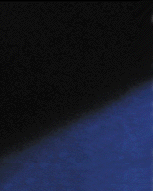|
|
National Folk Museum, the Place Where You Can See the Life of Korean Ancestors
When you walk around Gyeongbok-gung Palace, a building built with white marble and blue roof draws attention. This is National Folk Museum, where all the documents that Korean ancestors recorded are preserved.
The museum is located inside Gyeonbok-gung Palace, and it is a lively culture center where you can experience Korean traditional culture and life style of Joseon Dynasty (1392 ~ 1910).
The exhibitions at National Folk Museum is divided into regular and special exhibitions, and the regular exhibition is further divided into indoor and outdoor exhibitions, which all the visitors can see.
The first exhibition hall is called, "Korean People's Life and Culture Hall", and a brief introductory summary of Korean history and historical implication on Korean culture leads to the real-life tools from pre-historic ages and Samguk Period (B.C. 57 ~ 935), printings and porcelains of Goryeo Period (935 ~ 1392), technology and Hangeul of Joseon Period, and other pieces. which represent Korean people, are duplicated and exhibited.
The second exhibition hall is "Life and Material" and explains the life of farming, fishing, hunting, and all the life styles, which are the basis of the life of Korean people today. Also, craft, weaving, and dye works are exhibited here, which explain the economy of Korean people at that time.
The third exhibition hall is called, "The Life Time of Korean", and it displays the life time rituals, which every Korean encounters from the moment of birth to death. This hall exhibits all the social encounters that a person experiences throughout the life time, and as such you can understand the life of Korean people better. For instance, exhibitions include children's play, stationery shops, schools, currencies, folk superstitions, traditional play and the social structures.
Besides, through the regular exhibitions, National Folk Museum offers chance to meet Korean culture and life style, and focused on themes like the structure of Korean thinking, crafting skills, and arts, it holds special exhibitions with aid of materials from other museums and its own.
A special exhibition, "Hangang, the Mother of Korean People" at National Folk Museum tells the past and present of Han river, which often alludes to "the Miracle of Han river" as it symbolizes the mother nature of Korean people. This exhibition is held in special exhibition hall, folk media hall, and outdoor exhibition hall, and Han river related materials such as, 500 pieces of remains, 200 photos, and media display will be exhibited until October 29th.
The miniature models of Anapji, Hwang Ryong Sa 9-floor Tower, and Geunjeongjeon of Gyeonbok-gung Palace from Shilla Period (one of the three nations when Korea was divided into three) are attractions of this folk museum as well. There are other exhibition displays around the museum, such as Cheonhadaejanggun and Jihayeojanggun (protecting deity stationed at the village entrance), Dolharubang (a grandfather figure carved out from granite, which is believed to be a deity of Cheju-do), and Yeonjabang, which are definitely worth a look..
Museum Information
Tel 02-734-1346
Web site www.nfm.go.kr
Opening hours 09:00 ~ 18:00 (closed on every Tuesday)
Admission fee 25 ~ 64 years old 700won, 19 ~ 24 years old 300won
How to get there Exit 5 of Gyeonbok-gung Palace station line number 3 or exit 2 of Gwanghwamun station line number 5, and the museum is a 15 minute-walk away.
|
| Museum of Korean Embroidery |
At the Korean Embroidery Museum you can see all of Korea¡¯s embroidery culture. There are over 200 pieces of embroidery ... |
| |
|
| Seoul Olympic Museum |
As you know, Korea was successful in holding the 1988 Seoul Olympics. The recently built and highly developed Seoul Olym... |
|
| The Agriculture Museum |
As an agricultural country with a long history, Korea has lots of valuable agricultural heritages. However, due to Kore... |
| |
| |
| |
| |
|
| King Sejong Memorial Hall |
This hall was built to remember King Sejong, the fourth King of the Joseon Dynasty(1418-1450), who invented 'Hangeul' in... |
| |
| |
| |
|
| Onggi Folk Museum |
Onggi clay pottery, both glazed and unglazed, has been indispensable in Korean everyday life until several decades ago. ... |
|
| Park Eul Bok Embroidery Museum |
Park Eul Bok is a master embroider in Korea, and recently opened an embroidery museum in her house in Uidong, Seoul on M... |
|
| The Bank of Korea Museum |
The museum is located the main building of the Bank of Korea, which was built 1912, during the Daehan period. ... |
|
| The Royal Museum |
Where you can learn about life under the Joseon Dynasty at one glance.
Origins of the relic gallery within the palace
... |
|
|



